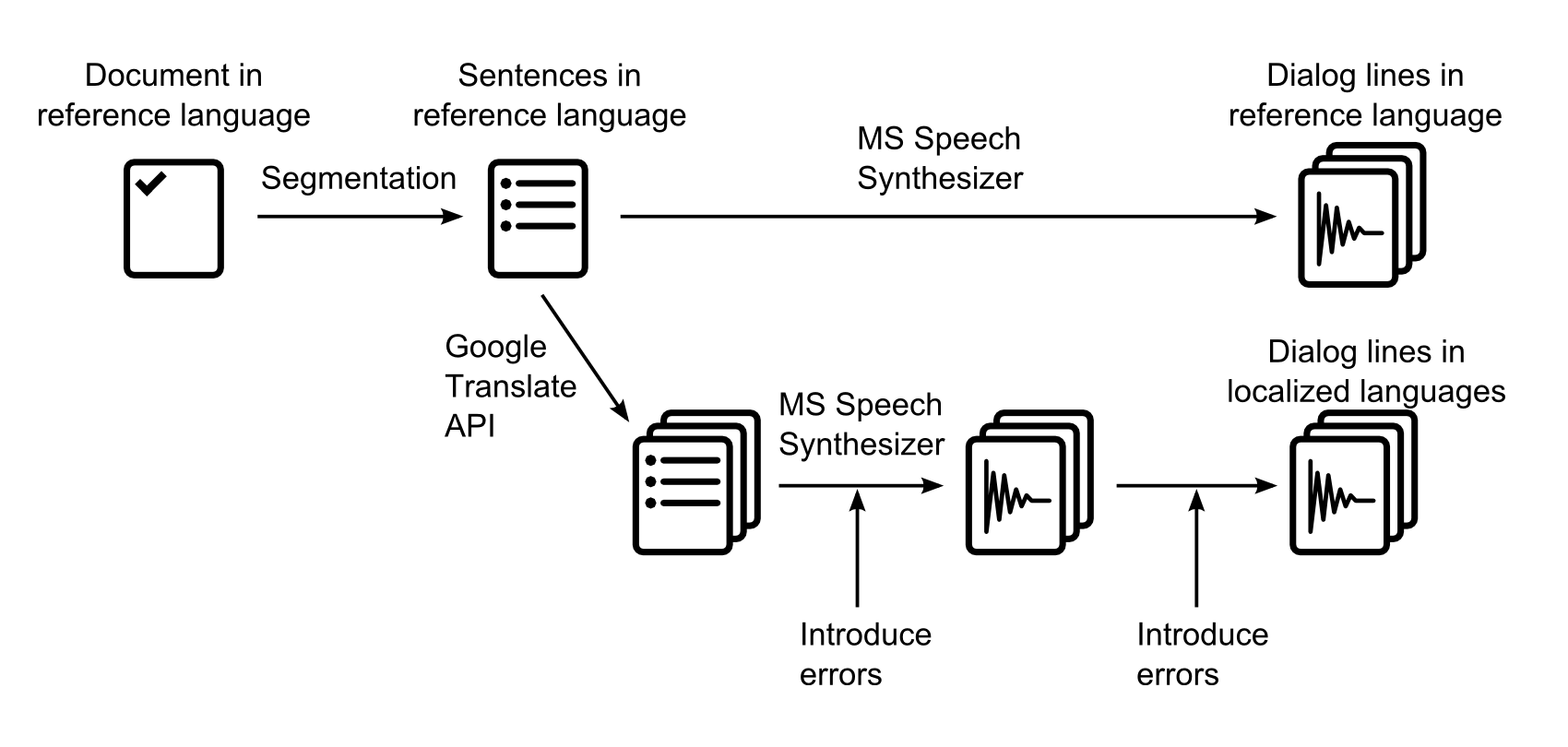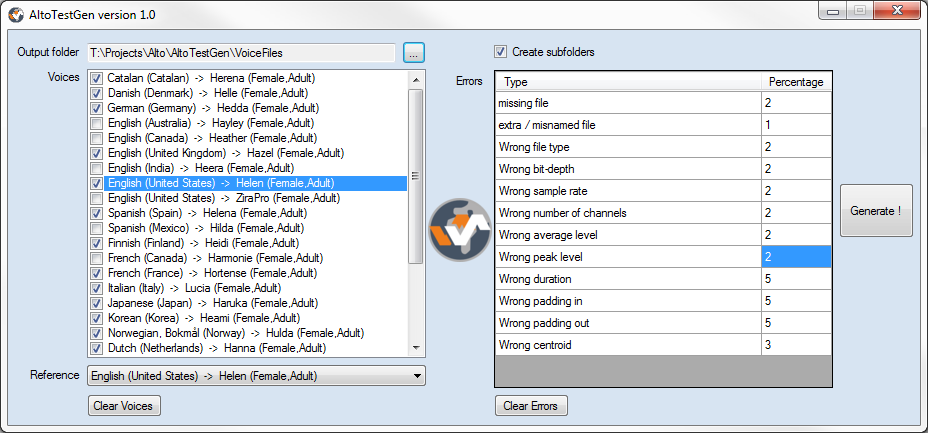Localization
now browsing by category
10 reasons to use Alto for Game Audio
This post describes some of the unique features of Alto and explains why anybody working in game audio should use it!
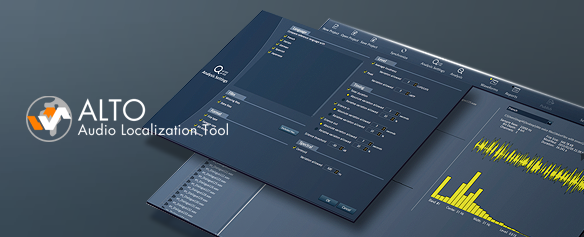
Tsugi just released Alto 2.0. What started as a tool for audio localization quickly became much, much more than that. For less than the price of some metering plug-ins, it will not only analyze and compare all your dialogue files in various localized languages (including loudness, silences, audio format and more) but it will also allow you to correct the files, rename them, test them in situation, generate placeholder dialogue etc…
In other words, it will probably save you a lot of time and money while making sure your deliverables stay at the highest quality standard. So here are 10 reasons you should use Alto if you are in working game audio:
1 – It will adapt to your workflow
Alto will work with any file naming convention or file hierarchy. As for the languages, it comes with useful presets for FIGS, ZPHR, CJK, PTB etc… but nothing prevents you from adding Klingon to the list if needed!
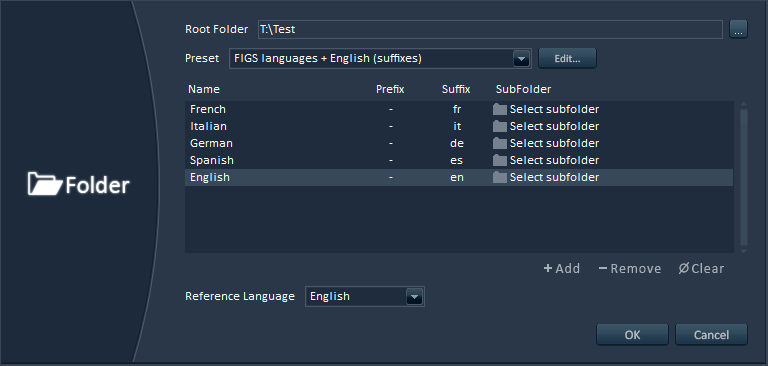
2 – Advanced analyses
Alto will analyze your localized dialogue files (or any sound files really) and find if anything is missing. It will also make sure that the audio format is correct (sample rate, bit-depth, number of channels). It will even check that the average and peak loudness, the duration, the leading and trailing silences are all within the margins of error you specified.
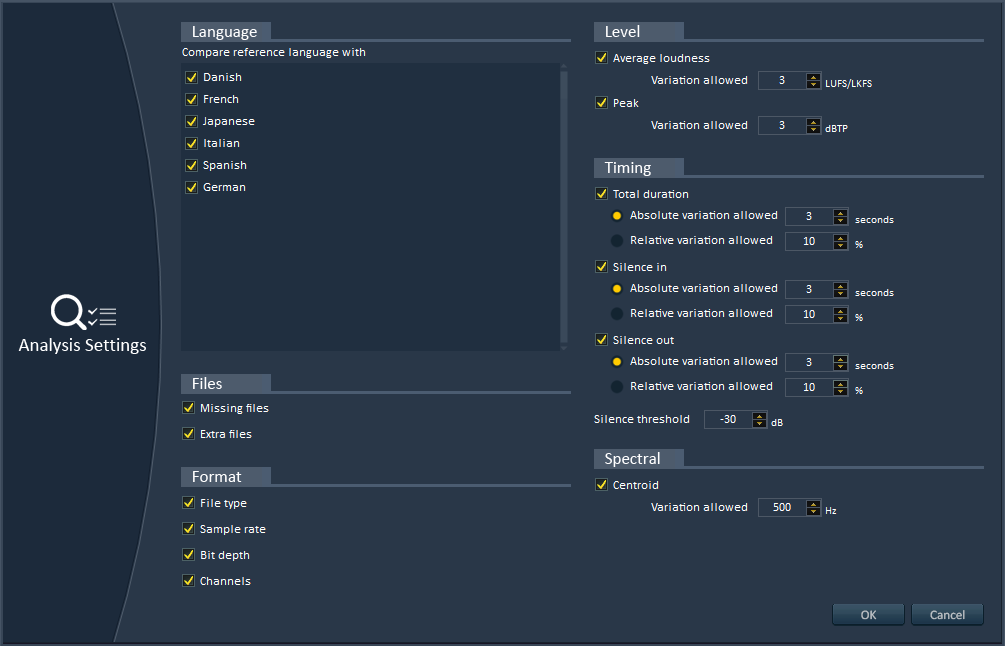
3 – Automatic correction of errors
Alto can correct the errors it found automatically, saving you previous time. You can still choose to ignore some files or some types of errors. You can also indicate if you want the correction to hit the exact value of the reference file or the nearest value in the valid range, in order to minimize the audio modifications.
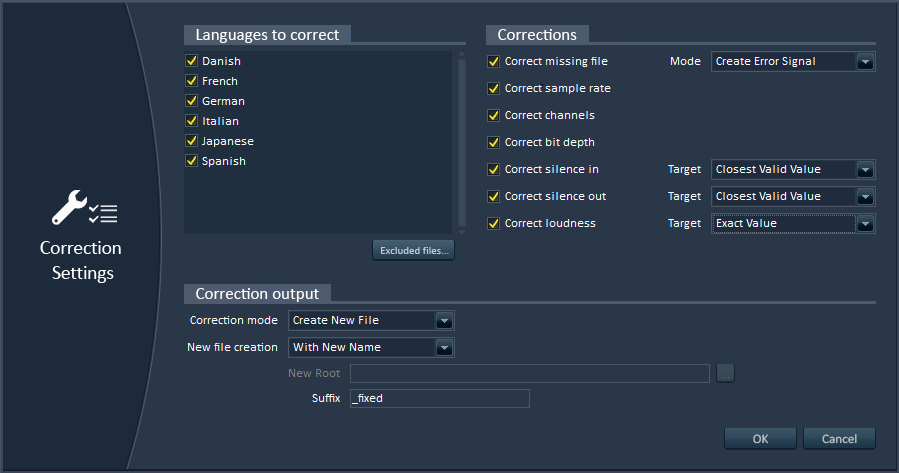
4 – Awesome reports
Alto can generate exhaustive and great-looking reports for your team or your client. They can be exported in PDF, HTML or as Excel sheets, so you can adapt to whatever your interlocutor is using. They include all the errors found, statistics with pie charts per language and so on…
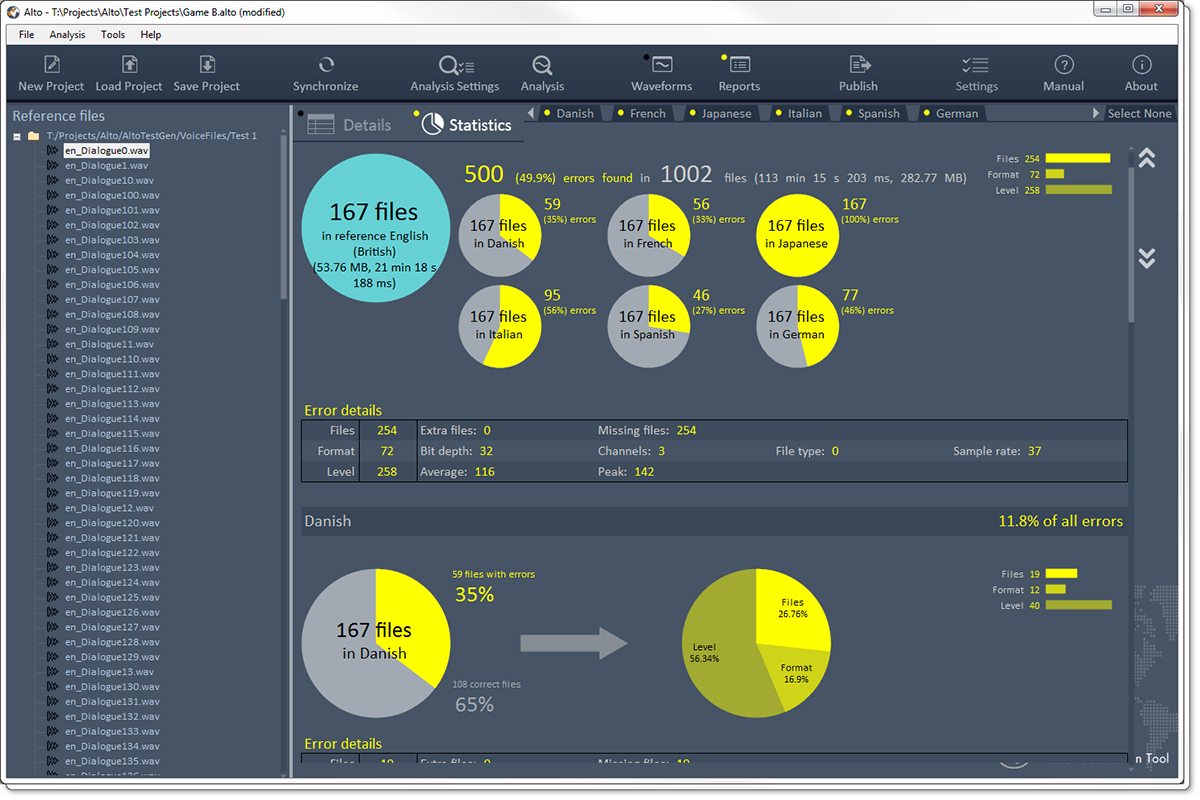
5 – Easy integration with your game audio middleware
Alto can import dialogue files from your ADX2, Fabric, FMOD or Wwise game audio project and synchronize with it. Know any other software that can do that?
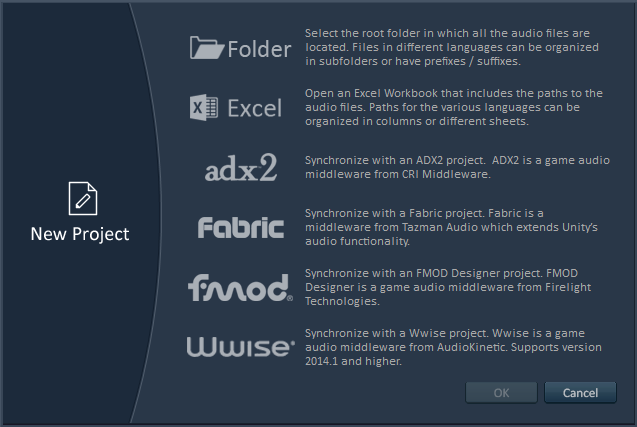
6 – Easy integration with your own technology
Alto’s plug-in system allows you to interface with your proprietary tools and databases. Its command line version can be called from your build pipeline or from a third-party tool. It can also save reports in XML that can be easily read by other tools.
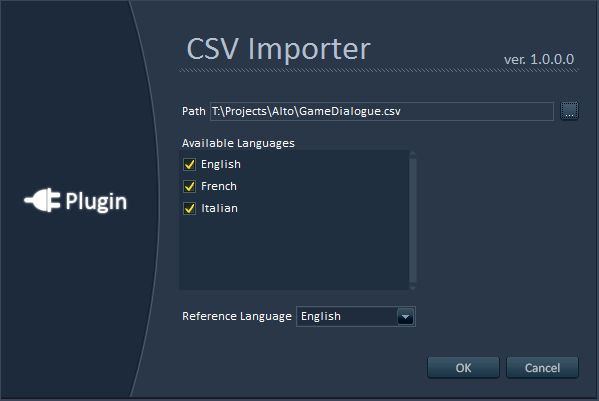
7 – Versatile Batch Renamer
Alto has an absolutely fantastic batch renamer (really, try it…). You don’t need to have an Alto project open: just drop some files, create a renaming preset (based on conditional, additive, removal and replacement rules), press rename and voila! The batch renamer can handle very complex scenarios very easily and can even rename files based on their audio characteristics. Fantastic, I told you ![]()
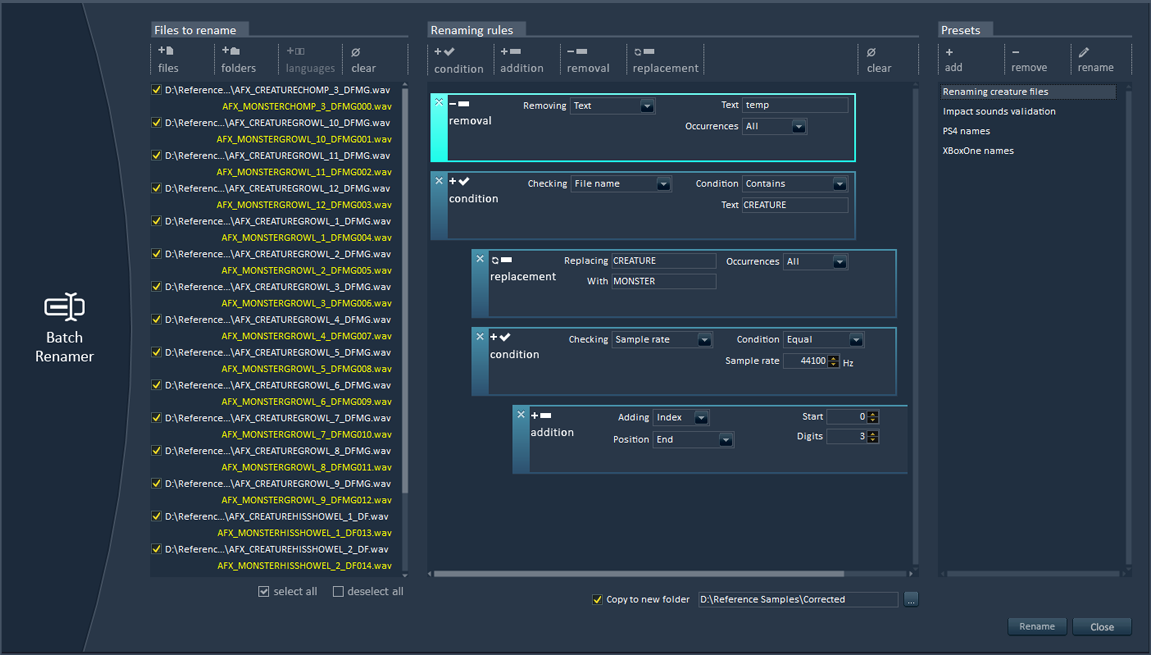
8 – Loudness Equalization
Again, you don’t even have to create an Alto project. Open Alto, open the loudness equalizer tool, drop your audio files (not necessarily dialogue) from the Windows Explorer, enter a target LUFS value or get it by analyzing a sound file, press Process and you are done! It’s that simple!
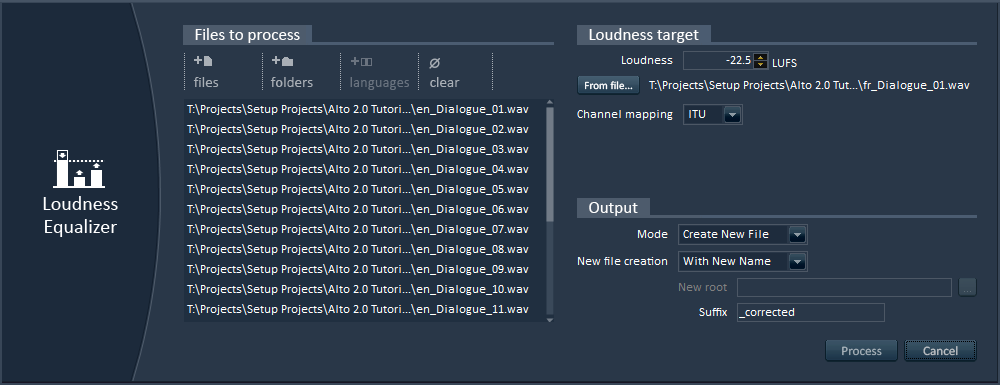
9 – Interactive dialogue tester
No need to fire up your game audio middleware or to ask an audio programmer: Alto comes with its own feature that allows you to test interactive dialogue, including randomization, gaps between sentences etc… You can check how concatenated lines will sound together in a few clicks, with a very user-friendly interface. You can even use it to test the sequencing of sound effects.
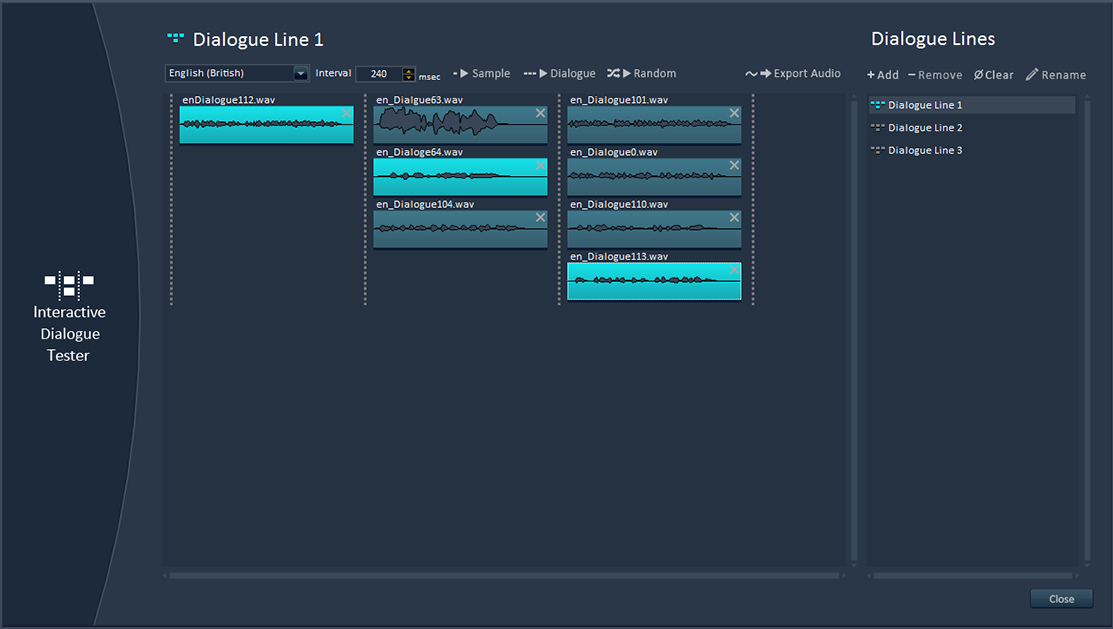
10 – Creation of placeholder dialogue
Thanks to Alto’s speech synthesizer, you can instantly create placeholder dialogue. Here too, no need to create a project. Start Alto, open the Speech Synthesizer tool, import the text or Excel file containing the lines to generate, select a voice in the right language (yep, not only in English!), and here you go, a wave file is generated for each dialogue line!
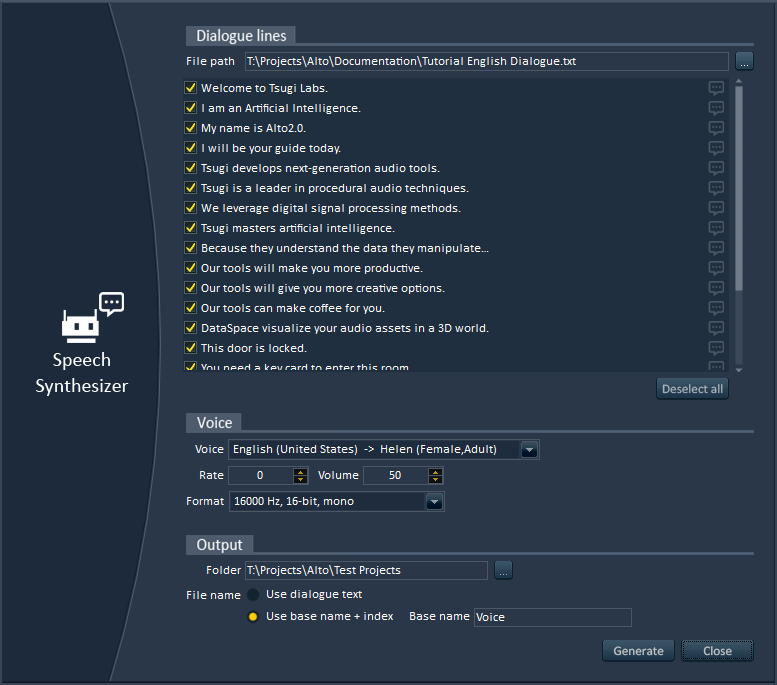
There are many other cool features in Alto that will make your life as a game audio professional a lot easier. But don’t take my word for it, download the free demo version and give it a try: http://www.tsugi-studio.com/?page_id=1923
Generating thousands of dialogue files
This post describes how we generated thousands of voice files to test Alto, the new audio localization tool released by Tsugi.
So many files, so little time
With the explosion of content in AAA games, it is not rare to end up having thousands or even tens of thousands of dialog lines in a project once they are all translated. Some lines may be recorded internally, others some by external studios or localization agencies. But how do you manage quality control? Comparing all these dialog lines manually would be cumbersome, error-prone, and actually pretty much impossible without an army of little elves with multilingual skills.
Enter Alto. Alto is an audio localization tool (see how clever?) that compares these thousands of dialogue lines in several languages automatically, finding missing or misnamed files, checking their audio format (sample rate, channels and bit depth), their duration (including leading and trailing silence), their levels (average and peak) or even their timbre. Alto can get the data directly from your folders (with files organized in subfolders, having prefixes or suffixes…) or by reading the files referenced by an Excel sheet or even by importing a game audio middleware project (ADX2, FMOD and Wwise are all supported). Here are a couple of screenshots:
 |
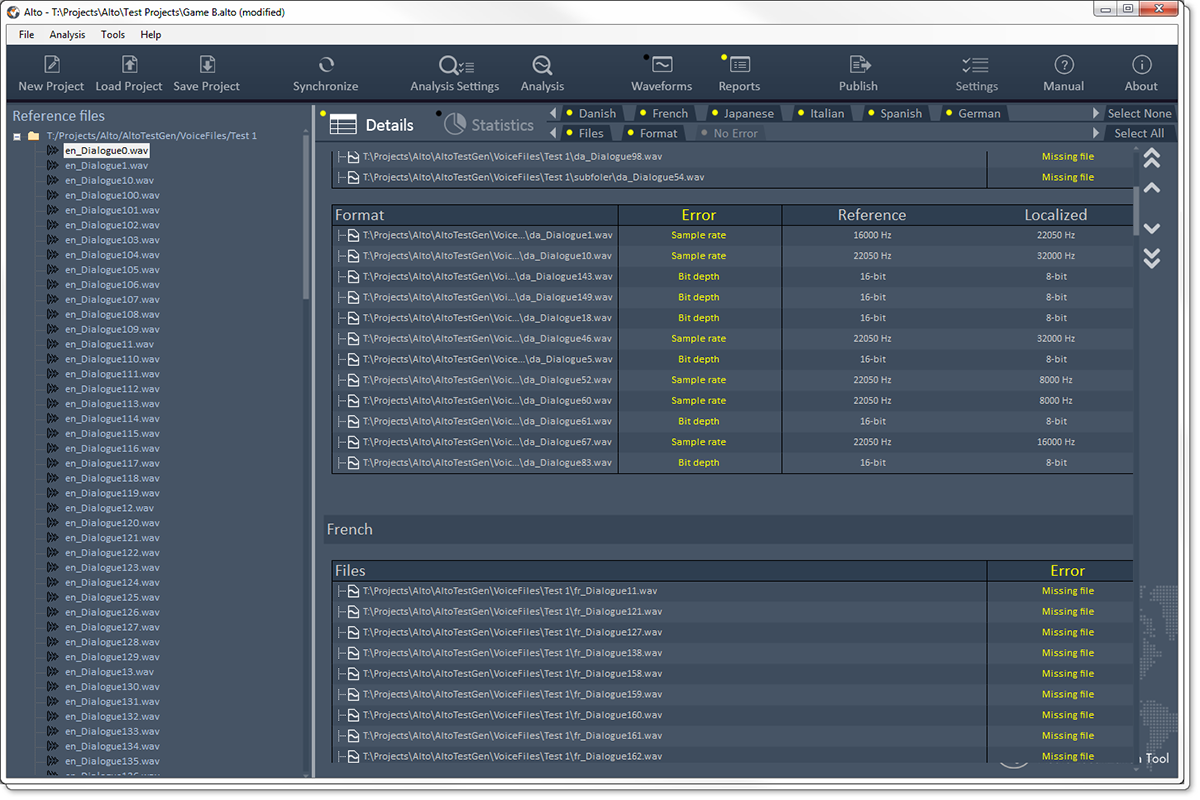 |
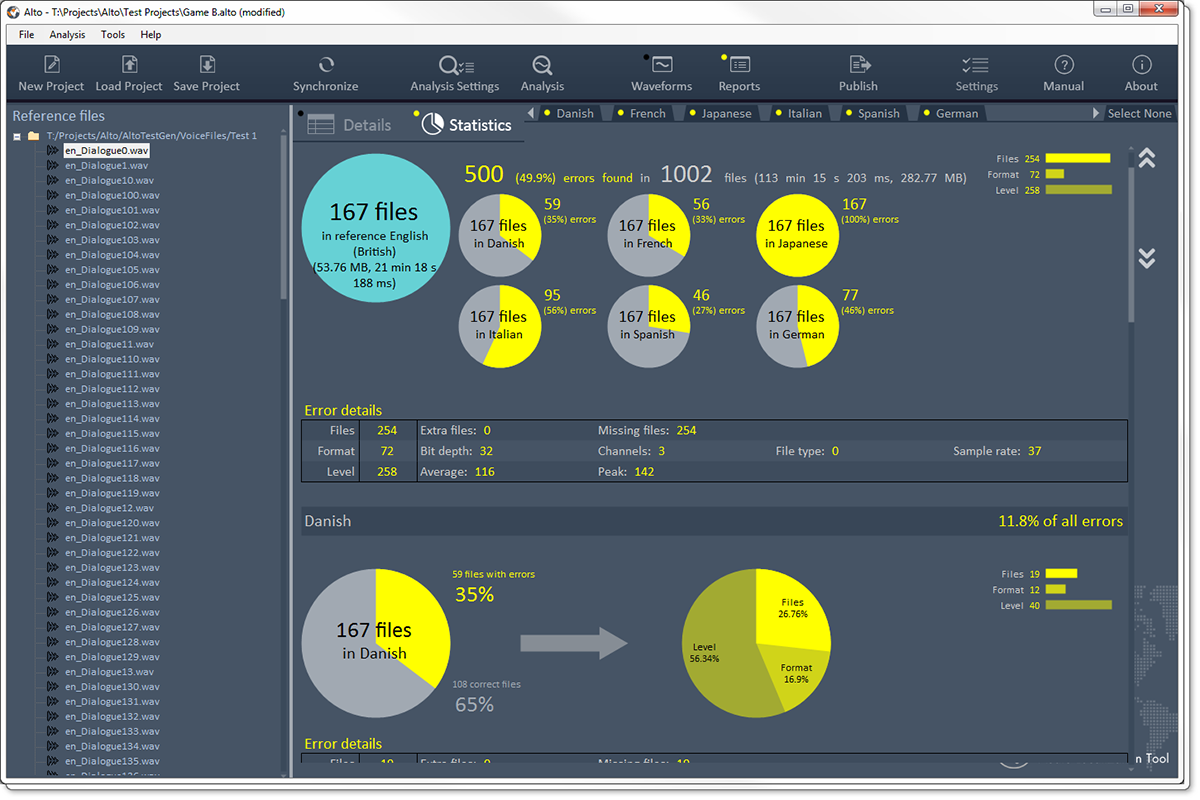 |
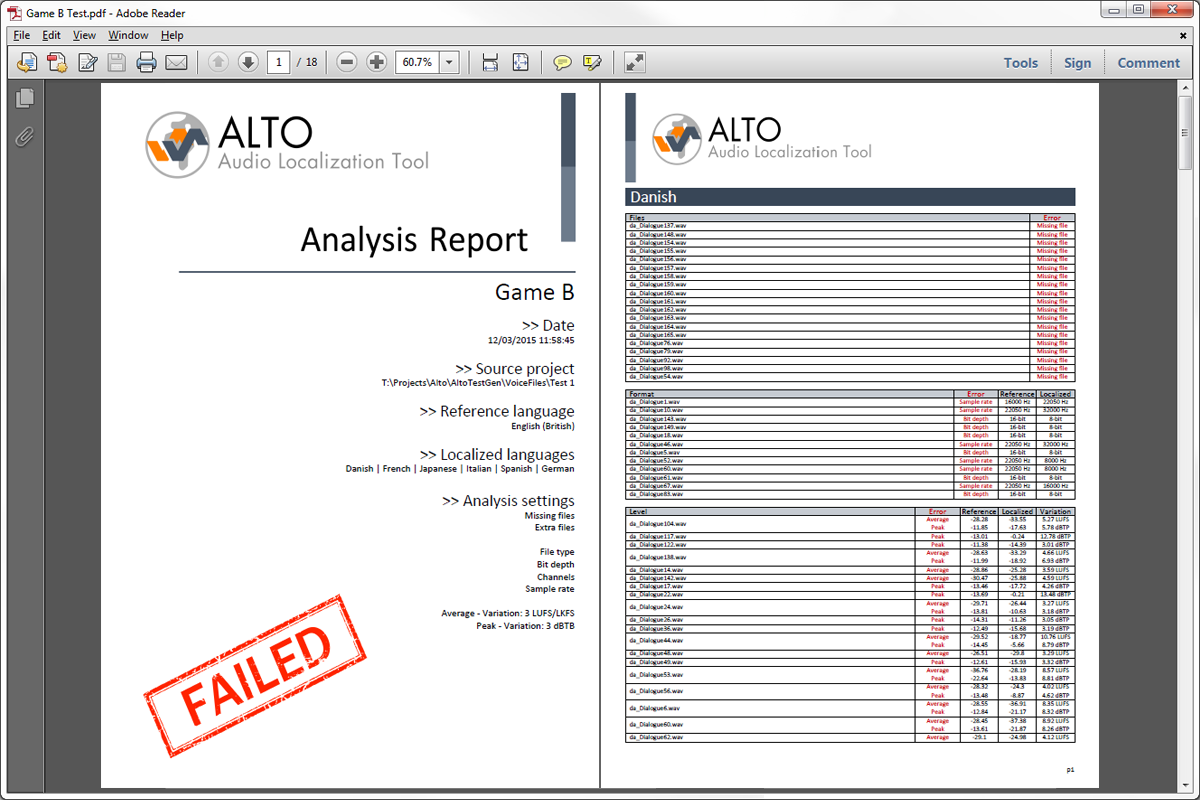 |
Once the analysis done, you can give a nice PDF / Excel / HTML report to your manager or client, showing the quality of you work. Or go back to check all the errors ![]() You can also get an XML file so third party tools could read it and automatically mark dialogue as final or placeholder for example.
You can also get an XML file so third party tools could read it and automatically mark dialogue as final or placeholder for example.
It’s incredible the number of small – and sometimes bigger- errors the studios who beta-tested Alto have found in their older projects. That does not mean their work was bad, but simply that it is nearly impossible to get perfect localized dialogue in each language on big projects without some kind of automated process to test everything.
Computer polyglotism
Testing Alto meant that we needed thousands of audio files in many languages. This kind of data is quite hard to get. Asking files from old projects to some of our clients would have taken time due to IP concerns. Of course, we planned to have beta-testing with game studios, but we at least needed something to help us develop the program, before it even reached the beta-testing stage.
It’s not that uncommon in the game industry to generate placeholder dialogue lines with a speech synthesizer. So I decided to do the same with the test files and to write an application which would create all these files for us.
This application takes a text file as input. It starts by segmenting it into sentences based on the punctuation marks. Then I use the Microsoft Speech Synthesizer to generate the audio files for the reference language. The next step is to send the sentences to the Google Translate API to be translated in order to synthesize them in other languages. It turns out that the Google Translate API is not free anymore (alternatives are not free either or of lesser quality). Even for a few files, you need to register and enter your credit card information, you need an API key etc… However, Google’s interactive translation web page still makes callbacks using public access without an API key. By giving a look to these AJAX calls and sending them directly from code it is possible to get your translation done (you just need to parse out the JSON returned).
Since we are sending the text sentence by sentence and not as a big chunk of text, we don’t have a problem with the size limit imposed by Google’s translation web page. Of course this also means that we make many more calls, which could be a problem speed-wise. Fortunately, it ends up being very fast. Having now translated the text in various languages, I sent it to the corresponding voices I downloaded for the Microsoft Speech Synthesizer. You can find 27 of them here! (On that topic, make sure that the voices you are downloading are for the version of the synthesizer you have installed).
Purposedly wrong
Finally, I needed to introduce some errors to make sure Alto was doing its job correctly. The Microsoft Speech API allows us to choose different types of voices as well as different rates and volumes of speech, which was an easy starting point to add some variations. In addition, the program re-opens some of the files generated and saves them in a different format, with a different number of channels, sample rate or bit-depth. Some files are also renamed or deleted to simulate missing and misnamed files. I used some existing Tsugi libraries to add some simple audio processing to stretch the sounds, add silence at the beginning or at the end, as well as to insert random peaks. To test the spectral centroid, the application also boasts a few filters.
The user interface of our little tool allows us to select the voices (and therefore the corresponding languages) we want to generate dialogue for, as well as a percentage for each type of error we want to insert. Playing with the percentages allows us to test various cases from one or two tiny mistakes lost in thousands of files to all files having multiple errors. The program also generates a log file so we can see which errors were added to which files and check that they are actually detected in Alto.
Here is a picture of AltoTestGen:
Not very pretty but it did the job! All in all, after just a couple of hours of programming, we had thousands of lines in about 20 languages and could generate thousands of new ones in a matter of minutes. Although the voice acting is definitely not AAA ![]() , these files are easy to recognize and perfect for our tests: mission accomplished!
, these files are easy to recognize and perfect for our tests: mission accomplished!

